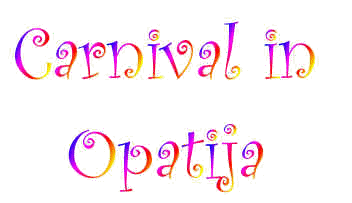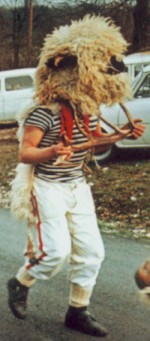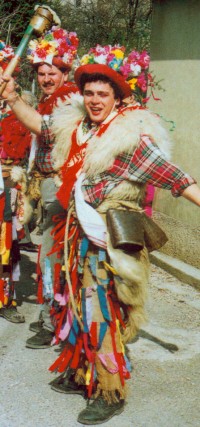

History and characteristics
The carnival festivities have strong roots in Opatija. Their origin is from the time when the key persons were the Zvončari, people who, at the beginning of February, dressed in skins of wild animal, wore colourful hats and had cowbells tied to their body. they would go out in the forests in groups to scare out the turkish soldiers, which dates the events to somewhere about 1511, when the last battle took place in this territory. Every group of Zvončari has developed a unique style, equipment and outfit. That is why every group of Zvončari has a different number and size of bells, different masks (with small details), a piece of carved wood in the hands. In their rounds on the hillside, where they scare away the winter, they pass through villages and are given food and drinks. One interesting particular is that a round, when it starts, cannot be aborted for any reason (weather or anything else). To hear how it sounds press here. |
 |
 |
The traditions of this region have blended with the Italian traditions and other, because of the trade courses that go through the region. This has created a unique style of festivities. That's why today we have the groups Partenjaki, Fešteri, Zvončari, the Mantinjada tradition, and the Pust trials. The modern carnival parades were created in an effort to show our traditions to a wider public, and have became a part of the touristic package of Opatija. A great number of enthusisasts helps in preparing these parades. The teams that take part in the parade start making plans many months before they take place. The construction of the vehicles that race at the Balinjerada often starts a few days after the previous ends. Masked dances (Pusni tanci) are very popular; most of the people go to one of the organized dances and have fun meeting other people even if they won't recognize them the next day. There are traditional contests with prizes for the best mask, the best masked duo, and the best masked group. Fantasy goes a long way here. |
Among the other traditions, it would be a shame not to mention the carnival delicatesse: ulenjaki, presnac and other meals and cakes that are prepared at this time of the year.
Well, this are the essentials of the carnival days in Opatija. For more details I suggest that you read the book by Franjo Šepić-Bertin, Zvončari, partenjaki, feštari, maškare published by Izdavačko centar Rijeka in 1997. g.
This page hosted by ![]() Get your own Free
Homepage
Get your own Free
Homepage